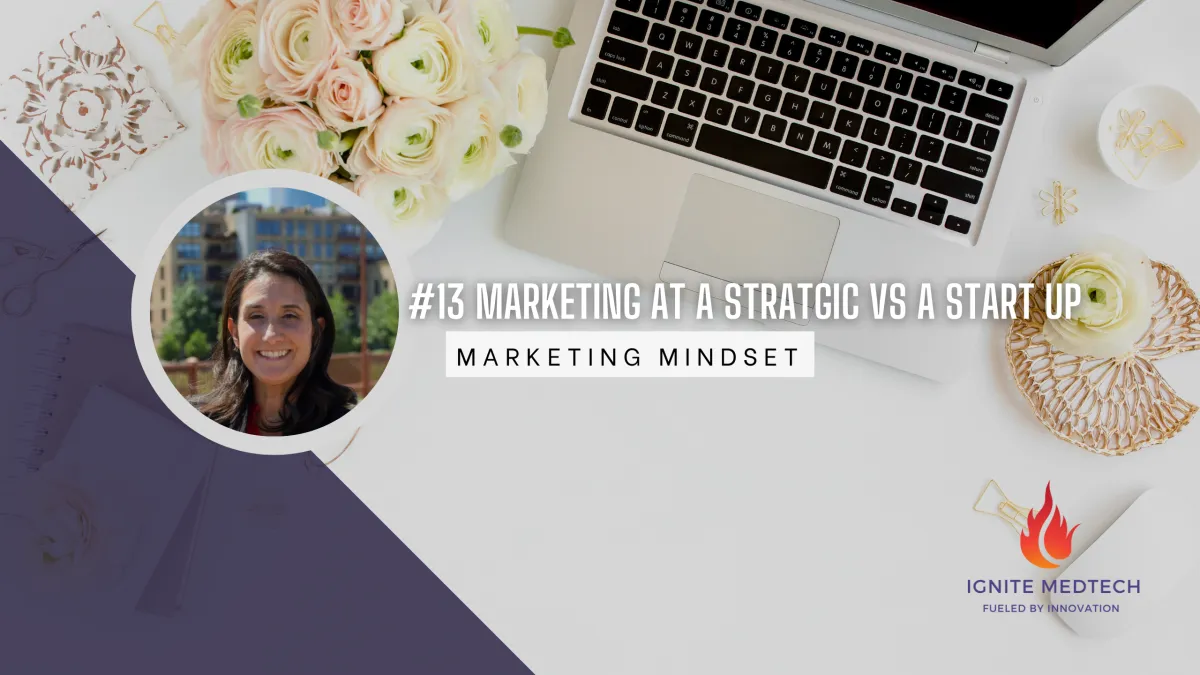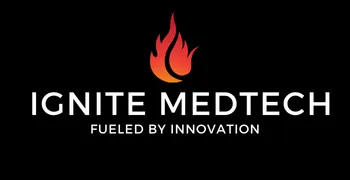Training and Webinars
We'll show you how it's done
Cohort based courses to free webinars get the resources you need to tackle the marketing yourself
Blog
We are passionate about healthcare marketing and love sharing our insights, tips, and strategies. Sign up to get the latest edition in your inbox.

Marketing at a Strategic vs. a Start Up
Marketing at a Fortune 500 MedTech Company vs. an Early-Stage MedTech Start-Up: Key Differences and Winning Strategies
Marketing in the MedTech industry presents unique challenges and opportunities, and the dynamics differ significantly depending on the size and stage of the company. Whether you're working at a Fortune 500 MedTech giant or an early-stage MedTech start-up, your marketing strategy, resources, and objectives will vary widely. While both aim to bring life-saving medical devices to market, their paths to success are shaped by factors like organizational structure, target audience, budget, and risk tolerance.
In this article, we'll explore the key differences between marketing at a Fortune 500 MedTech company and an early-stage start-up, offering insights into how marketing professionals adapt their approaches to meet the specific needs of each environment. Additionally, we'll provide strategies for how to succeed in each situation.
1. Resources and Budget
Fortune 500 MedTech Company: Large, established companies have significant marketing budgets. These budgets support multi-channel campaigns, international advertising, partnerships with prominent healthcare institutions, and investment in advanced marketing technologies. Teams are often large and specialized, with dedicated departments for content creation, social media, digital marketing, events, and public relations. This allows Fortune 500 companies to implement comprehensive marketing strategies that reach a wide audience across multiple geographies and platforms.
Early-Stage MedTech Start-Up: In contrast, start-ups operate with limited resources. Marketing budgets are typically lean, and teams are small, often with one or two individuals handling all aspects of marketing. The focus is on being scrappy, resourceful, and making the most of low-cost or free marketing channels. Start-ups rely heavily on organic growth, word-of-mouth marketing, and leveraging personal and professional networks.
Start Up Winning Strategy:
Prioritize agility and creativity. Focus on high-impact, low-cost channels like social media, email marketing, and content marketing. Consider influencer partnerships with key opinion leaders (KOLs) or niche healthcare bloggers who can amplify your message to targeted audiences. Experiment with viral, growth-hacking tactics to get the most out of every dollar spent. Crowdsourcing content or engaging in collaborations can also stretch your budget.
2. Brand Awareness and Market Trust
Fortune 500 MedTech Company: These companies have established brands that are well-known and trusted by healthcare professionals, regulators, and patients. Their long history, proven track record, and existing relationships with hospitals, healthcare providers, and key opinion leaders (KOLs) make it easier to introduce new products or expand into new markets.
Early-Stage MedTech Start-Up: Start-ups face the uphill battle of building trust and credibility from the ground up. Marketing efforts must emphasize building credibility, often by showcasing clinical trials, testimonials from early adopters, partnerships with reputable healthcare institutions, and endorsements from respected medical professionals.
Start Up Winning Strategy:
Build credibility early by forming partnerships with trusted institutions or clinical experts. Prioritize testimonials, case studies, and peer-reviewed evidence to back your product claims. Utilize KOL endorsements to bolster your credibility, and consider attending or sponsoring industry events to establish your presence. Creating trust can also be achieved through transparent communication, especially when showcasing clinical efficacy or regulatory milestones.
3. Regulatory Environment
Fortune 500 MedTech Company: Larger companies typically have entire teams dedicated to regulatory affairs. These teams are experts in navigating the complex regulations required by bodies like the FDA, European Medicines Agency (EMA), and other international regulatory agencies.
Early-Stage MedTech Start-Up: Start-ups, while still subject to the same regulations, often have fewer internal resources dedicated to regulatory affairs. This can lead to a faster, more agile marketing process, but also increases the risk of missteps.
Start Up Winning Strategy:
Lean on external regulatory consultants or advisory boards to stay compliant while moving fast. Make regulatory compliance a key part of your marketing narrative, especially as your product clears major milestones like FDA approval. Use these regulatory wins as marketing leverage to build confidence among potential customers and investors.
4. Speed and Agility
Fortune 500 MedTech Company: Large MedTech companies tend to be more methodical and slower to pivot. They have established processes, multiple layers of approval, and a more bureaucratic approach to decision-making.
Early-Stage MedTech Start-Up: Start-ups thrive on speed and agility. Their small size and lack of bureaucracy allow them to move quickly and adapt to changes in the market. Marketing teams at start-ups can test new campaigns, messaging, or channels, pivoting quickly if something isn't working.
Start Up Winning Strategy:
Capitalize on your agility by adopting a test-and-learn approach. Experiment with different messaging, channels, and strategies to find what works. Be willing to pivot quickly based on data, and don’t be afraid to take risks in your marketing. Agility is your competitive advantage, so move fast and iterate often.
5. Customer Focus and Sales Cycle
Fortune 500 MedTech Company: Large MedTech companies often market to multiple stakeholders, including hospitals, healthcare systems, group purchasing organizations (GPOs), and healthcare professionals. The sales cycle is often long and involves several decision-makers.
Early-Stage MedTech Start-Up: Start-ups often target niche markets or specific problems with innovative solutions. Their sales cycles may be shorter initially, especially if they are targeting individual healthcare providers or small clinics.
Start Up Winning Strategy:
Focus on solving specific, unmet needs with a compelling value proposition. If your sales cycle is shorter, ensure your marketing clearly articulates how your product offers an innovative solution to a pressing problem. Use fast customer feedback loops to refine messaging and capitalize on early wins to expand market reach.
Conclusion
Marketing at a Fortune 500 MedTech company and an early-stage MedTech start-up requires vastly different approaches, driven by differences in resources, brand awareness, regulatory constraints, speed, and customer focus. While large companies benefit from established trust and resources, start-ups thrive on agility, innovation, and a willingness to take risks. Understanding these differences—and implementing tailored strategies to win in each setting—is crucial for marketing professionals looking to navigate the unique challenges and opportunities in the MedTech industry at any stage.








